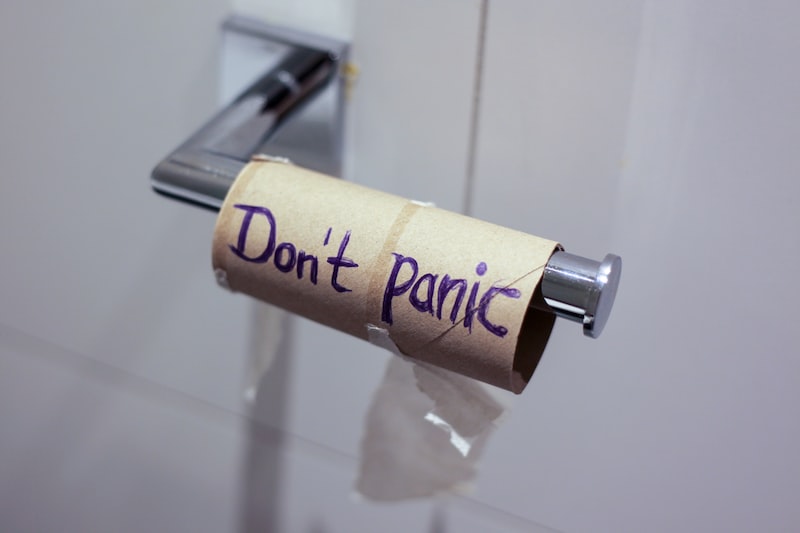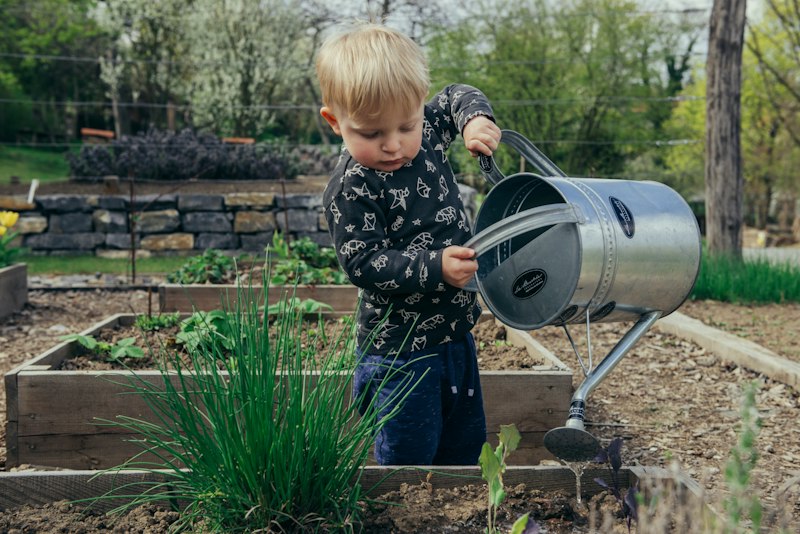Table of Contents

Are you aware that your toilet tank may be harboring hidden germs? While most people focus on cleaning the toilet bowl, they often overlook the tank. However, neglecting this crucial area can lead to the buildup of harmful bacteria and other contaminants. In this article, we will explore the importance of cleaning your toilet tank and provide you with the right way to do it.
So, why should you bother cleaning the toilet tank? Well, just like any other part of your toilet, the tank collects dirt, grime, and mineral deposits over time. These substances create an ideal environment for bacteria growth, which can then contaminate the water you use for flushing. Additionally, a dirty tank may cause unpleasant odors in your bathroom. By cleaning the tank regularly, you can prevent these issues and maintain a hygienic environment.
Now, let’s talk about the proper way to clean your toilet tank. First, start by turning off the water supply to the toilet. You can usually find the shut-off valve near the base of the toilet or behind the wall. Once the water is turned off, flush the toilet to drain as much water as possible from the tank.
Next, prepare a cleaning solution. A mixture of equal parts vinegar and water works well for this task. Vinegar is a natural disinfectant and helps remove stains and mineral deposits. Pour the solution into the tank, ensuring it covers all surfaces. Let it sit for about 15 minutes to allow the vinegar to work its magic.
While the solution sits, you can take the opportunity to clean the exterior of the tank using a mild cleaner. Wipe away any dust or dirt, and pay special attention to the areas around buttons or levers.
After the 15 minutes have passed, scrub the inside of the tank with a toilet brush. Pay close attention to corners, crevices, and hard-to-reach areas. Flush the toilet several times to rinse the tank thoroughly.
Finally, turn the water supply back on and allow the tank to refill. Check for any leaks or issues with the flushing mechanism before using the toilet as usual.
Unveiling the Germ Hotspot: Are You Cleaning Your Toilet Tank Correctly?
Are you aware of the hidden germ hotspot in your bathroom? It’s time to unveil the truth about the often neglected area: the toilet tank. While most people diligently clean the bowl and seat, the tank is frequently overlooked. But are you cleaning your toilet tank correctly? Let’s explore this topic and discover why it’s essential to give your tank some attention.
The toilet tank may seem innocuous, but it can harbor a plethora of bacteria and germs. Every time you flush, water from the tank mixes with waste and creates a breeding ground for potentially harmful microorganisms. These germs can then contaminate your hands and even the air around you.
So, how should you clean your toilet tank? First, start by turning off the water supply to the toilet. You can usually find a valve near the base of the toilet or on the wall behind it. Once the water is shut off, flush the toilet to empty the tank as much as possible.
Next, it’s time to tackle the cleaning process. Prepare a solution of warm water and a mild detergent or antibacterial cleaner. Avoid using harsh chemicals that could damage the components inside the tank. Dip a sponge or cloth into the solution and scrub the interior surfaces of the tank thoroughly, paying special attention to any areas with visible stains or mineral deposits.
After cleaning, rinse the tank with clean water to remove any residue from the cleaning solution. Be sure to also wipe down the outer surface of the tank with a disinfectant cleaner to eliminate any bacteria lurking there.

Finally, don’t forget to clean the toilet bowl and seat as well. These areas can also accumulate germs and should be regularly disinfected to maintain proper hygiene.
cleaning your toilet tank is crucial for maintaining a healthy and sanitary bathroom environment. By following the correct cleaning procedure and giving the tank the attention it deserves, you can minimize the risk of spreading germs and ensure a clean and hygienic toilet for you and your family. So, the next time you tackle your bathroom cleaning routine, don’t forget to include the often overlooked but germ-ridden toilet tank!
Secret Stash of Bacteria: Discover the Hidden Dangers Lurking Inside Your Toilet Tank
Did you know that there’s a secret stash of bacteria lurking inside your toilet tank? Yes, you heard it right! While we often clean our toilets diligently, the hidden dangers residing inside the tank are easily overlooked. In this article, we’ll uncover the mysteries of the toilet tank and shed light on the potential risks associated with these unseen microorganisms.
Picture your toilet tank as a hidden ecosystem, teeming with life. It provides a damp and dark environment, perfect for bacteria to thrive. One of the main culprits is mold, which loves to grow in moist conditions. Mold spores can be released into the air when you flush, leading to respiratory issues and allergies. So, next time you catch a whiff of an unpleasant odor after flushing, it might be time to investigate your toilet tank.
Another danger hiding within the tank is bacteria. Harmful strains like E. coli and salmonella can find their way into your water supply through cracks or leaks. These bacteria can cause gastrointestinal problems, including diarrhea and stomach cramps. Regular cleaning and disinfection of your toilet tank can help reduce the risk of bacterial contamination.
Furthermore, mineral deposits can accumulate over time, forming a crusty layer inside the tank. This buildup not only affects the toilet’s efficiency but also serves as a breeding ground for bacteria. The combination of stagnant water and organic matter provides an ideal habitat for these unseen invaders. Ensuring regular maintenance and cleaning can help prevent the formation of these deposits.
Now, you might be wondering how to protect yourself from the hidden dangers within your toilet tank. Here are some simple steps to follow. Firstly, regularly clean and disinfect the tank using a mild cleaner or vinegar solution. Scrubbing the walls and removing any mineral deposits will help keep bacteria at bay. Secondly, inspect your tank for any leaks or cracks that could allow contaminants to enter your water supply. Lastly, consider using toilet tank tablets or cleaning products specifically designed to prevent bacteria and mold growth.
don’t underestimate the secret stash of bacteria residing inside your toilet tank. Mold, harmful bacteria, and mineral deposits can pose risks to your health if left unchecked. By taking proactive measures, such as regular cleaning and maintenance, you can ensure a cleaner and safer toilet environment for you and your family. So, roll up your sleeves and give your toilet tank the attention it deserves!
Flush Out the Truth: Experts Reveal the Best Techniques to Cleanse Your Toilet Tank of Germs
Are you tired of a dirty and germ-infested toilet tank? Well, it’s time to flush out the truth and discover the best techniques to cleanse your toilet tank effectively. In this article, we’ll reveal expert tips that will leave your toilet tank sparkling clean and free from harmful germs.
When it comes to cleaning your toilet tank, the first step is to gather the necessary supplies. You’ll need rubber gloves, a scrub brush, white vinegar, baking soda, and a bucket. Put on those gloves, roll up your sleeves, and let’s get started!
Begin by turning off the water supply to the toilet. Look for the shut-off valve located near the base of the toilet. Once the water is off, flush the toilet to drain out most of the water from the tank. This will make the cleaning process easier.
Next, mix equal parts of white vinegar and water in the bucket. White vinegar not only helps to remove stains but also acts as a natural disinfectant. Pour the vinegar-water solution into the tank, making sure it covers all the surfaces. Let it sit for about 30 minutes to an hour, allowing the vinegar to work its magic and break down any grime.
While the vinegar solution is doing its job, take your scrub brush and sprinkle some baking soda inside the toilet bowl. Baking soda has excellent cleaning properties and helps to eliminate odors. Use the brush to scrub the bowl thoroughly, paying attention to the areas under the rim and around the edges.

Afterward, return to the tank and scrub away any remaining dirt or residue using the brush. Focus on the walls of the tank, the corners, and the components, such as the flush valve and the flapper. Rinse the brush frequently in the vinegar solution to ensure effective cleaning.
Once you’re satisfied with the cleanliness of the tank, it’s time to turn the water supply back on and refill the tank. Flush the toilet a few times to ensure that any remaining vinegar solution is flushed out completely.

Now, stand back and admire your sparkling clean toilet tank! Regularly following these cleaning techniques will not only keep your toilet tank germ-free but also maintain its functionality in the long run.
The Dirty Truth: Why Neglecting Your Toilet Tank Could Be Hazardous to Your Health
Have you ever stopped and considered the hidden dangers lurking inside your toilet tank? It may not be the most glamorous topic, but neglecting this important part of your bathroom could pose serious risks to your health. Let’s uncover the dirty truth about why you shouldn’t ignore your toilet tank.
First and foremost, stagnant water in the tank can become a breeding ground for harmful bacteria and germs. The warm and moist environment provides the perfect conditions for these microorganisms to thrive. From E. coli to salmonella, the presence of these pathogens can lead to severe gastrointestinal infections if they find their way into your drinking water or contaminate surfaces in your bathroom.
Furthermore, the accumulation of mineral deposits and sediment in the tank can affect the quality of your water. Over time, minerals like calcium and magnesium can build up, causing discoloration and altering the taste and odor of the water. This not only makes it unpleasant to use for daily activities like brushing your teeth or washing your face, but it can also impact the effectiveness of cleaning products.
Neglected toilet tanks can also be a source of mold growth. Mold thrives in damp environments, and the constant moisture present in the tank provides an ideal breeding ground. Breathing in mold spores can trigger allergies, respiratory issues, and even asthma attacks, especially for individuals with pre-existing conditions.
If that wasn’t enough, a malfunctioning toilet tank can lead to costly water damage. A leaky tank can go unnoticed for an extended period, resulting in excess water seeping into your floors and walls. This not only weakens the structural integrity of your bathroom but also creates a favorable environment for mold growth.
Now that you understand the hazards of neglecting your toilet tank, it’s crucial to incorporate proper maintenance into your routine. Regularly clean the tank, remove mineral deposits, and ensure there are no leaks or cracks. Consider using environmentally friendly cleaning products to minimize the use of harsh chemicals.
Remember, a little care and attention can go a long way in safeguarding your health and preventing potential hazards in your home. Don’t let your toilet tank become a breeding ground for bacteria, mold, and water damage. Stay proactive and keep your bathroom clean and healthy.





